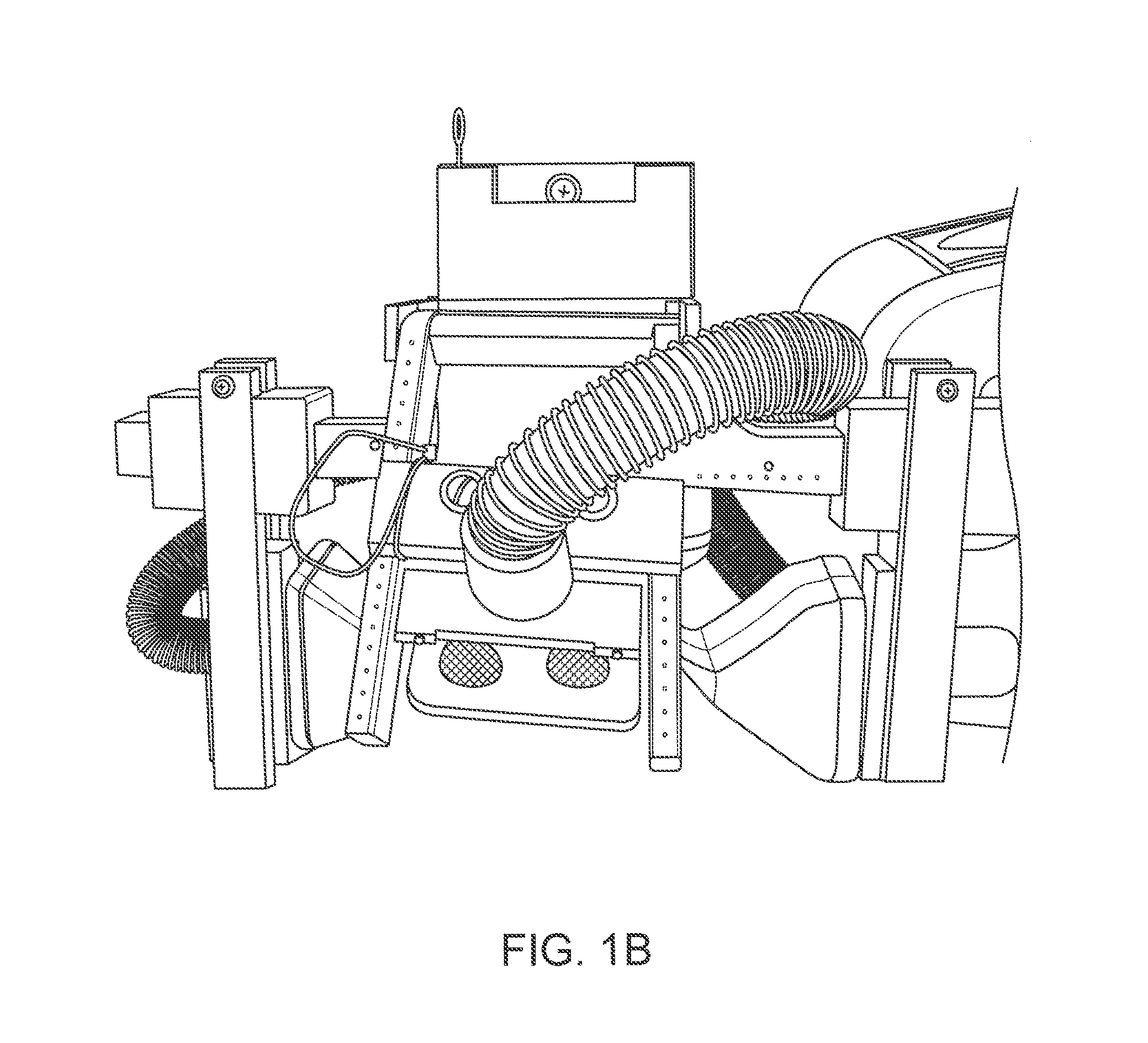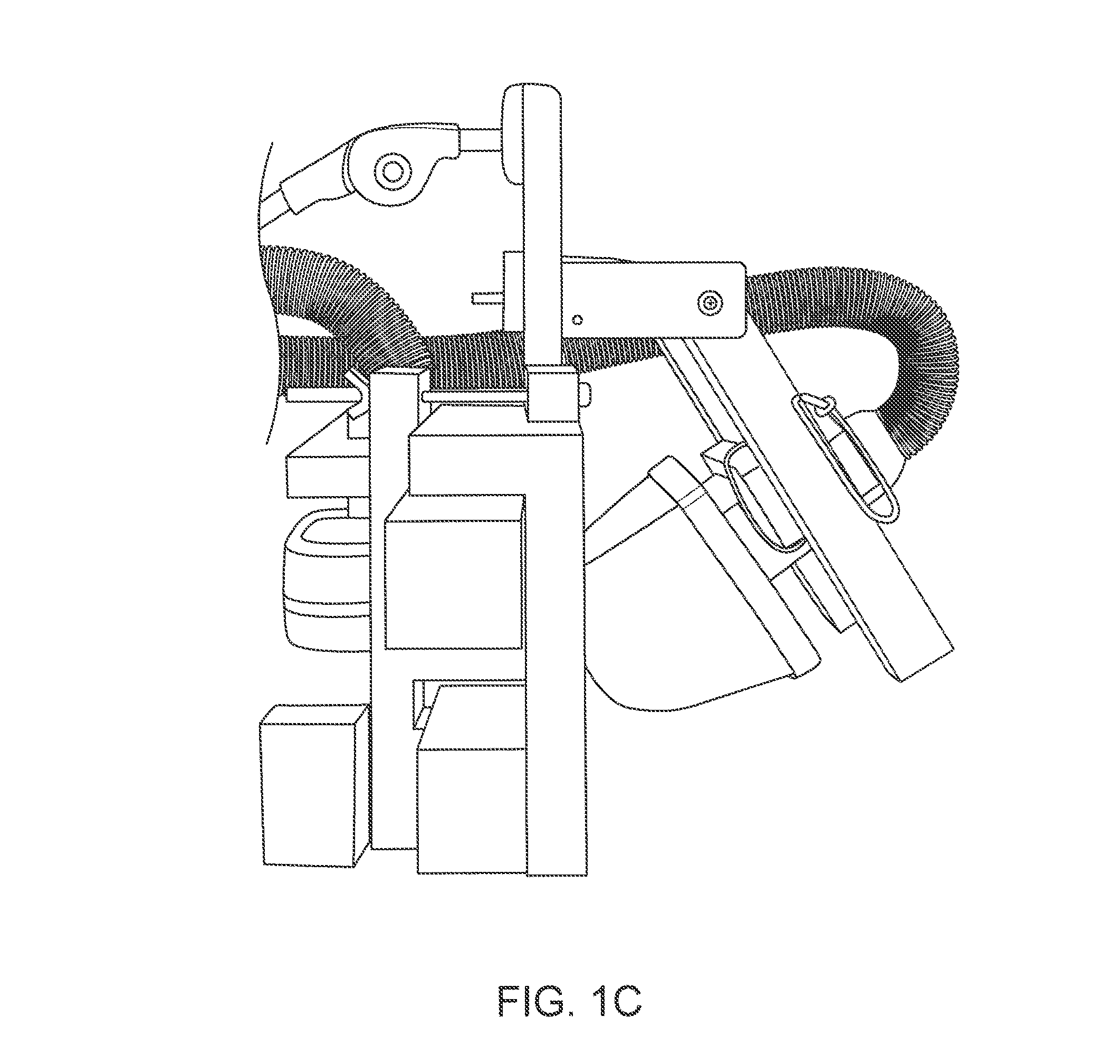Sub-motor-threshold stimulation of deep brain targets using transcranial magnetic stimulation
a transcranial magnetic stimulation and sub-motor technology, applied in magnetotherapy, magnetotherapy using coils/electromagnets, magnetotherapy, etc., can solve the problems of unexpective effective sub-mt stimulation and achieve the effect of easier fire and greater probability of excitation
- Summary
- Abstract
- Description
- Claims
- Application Information
AI Technical Summary
Benefits of technology
Problems solved by technology
Method used
Image
Examples
Embodiment Construction
[0023]One variation of an experimental set-up is illustrated in FIG. 1A. FIG. 1A illustrates a TMS system including four TMS electromagnets. In FIG. 1A, the CAD model illustrates an arrangement of magnets which may be referred to as a “diamond array.” The subject's head and any electromagnet coil fixation device are not shown in this figure. These four TMS electromagnets may be connected to a scaffold, gantry, or other fixation device. In FIG. 1A, the center, top TMS electromagnet is a swept-wing coil and the two lateral coils are V-Coils in the same vertical plane. A third V-Coil is located anteriorly, swinging down and configured to touch the subject's forehead.
[0024]FIGS. 1B to 1C illustrate a system such as the one shown in FIG. 1A. For example, FIG. 1B shows a front view of such a system and FIG. 1C shows a side view. FIG. 1D shows a diamond-array configuration of a TMS system relative to standard EEG placement landmarks. The centers of the electromagnets are located at the lan...
PUM
 Login to View More
Login to View More Abstract
Description
Claims
Application Information
 Login to View More
Login to View More - R&D
- Intellectual Property
- Life Sciences
- Materials
- Tech Scout
- Unparalleled Data Quality
- Higher Quality Content
- 60% Fewer Hallucinations
Browse by: Latest US Patents, China's latest patents, Technical Efficacy Thesaurus, Application Domain, Technology Topic, Popular Technical Reports.
© 2025 PatSnap. All rights reserved.Legal|Privacy policy|Modern Slavery Act Transparency Statement|Sitemap|About US| Contact US: help@patsnap.com



